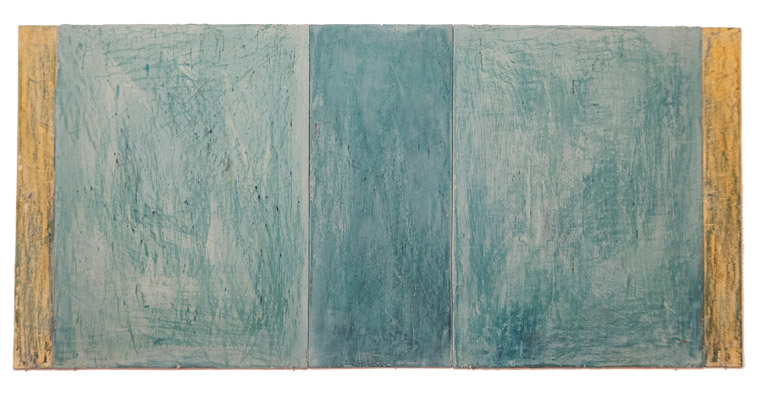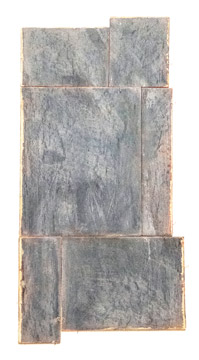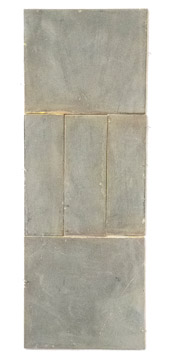The Pandemic in Puglia
2020
In 2020, Patricia and I sat out the Pandemic in Puglia, Italy. After six months in Uzbekistan we arrived in Rome in late February. We flew direct from Tashkent on what turned out to be the last flight before the route was closed. Italy was locked down two weeks later. We settled into daily life in a practically empty 15th century town. My days were divided between studio work in the mornings creating abstract lime fresco on board, and writing weekly ‘dispatches’ in the afternoon.
Having long been fascinated by color and surface, I wanted to deal with both as directly as I could. If this might be the end of life, I wanted to go out surrounded by pure color. It felt imperative that I continue to experiment with the high-quality plaster produced from the ubiquitous local limestone. Over the past years, I’ve received material and technical support from the state-of-the-art Calce Vive lime-works nearby. Their plasters are created in the age-old manner whereby limestone is crushed and cooked in olivewood fired kilns and aged 4 years in settling ponds. I create paintings in the fresco tradition, from lime plaster that I mix with pigments.
I also made a series of folding books with collage papers I had collected in Tbilisi, Georgia and Tashkent, Uzbeksitan. The books were conceived as part of an exhibition for the venerable Caffe San Marco in Trieste. Trieste is on the Northernmost end of the Adriatic Sea, while the Pugliese town sits near its Southern edge. There’s an ancient nautical and cultural connection between N and S. Long part of the Austrian-Hungarian Empire, Trieste has an illustrious history of large sumptuous cafes in the Viennese tradition. The storied Caffe San Marco has long been the place where Trieste writers have gone to write. It now features an excellent bookstore on-site. I was invited to create the exhibition for the bookstore in the café, alas it has been twice been postponed by Covid.
I spent the afternoons and evenings writing what one of my first readers called ‘dispatches’, and the name has stuck. I sent them out weekly to a growing list of readers beginning in early March. I had no intention of writing regularly, nor of sharing what I was writing with others. But the response to the first dispatch was so overwhelmingly positive that I kept at it. I wrote about what I saw and felt in the ancient and largely abandoned town, my thoughts about being there during such a strange time, and about life as an artist. I found the discipline of serializing my ideas very challenging, highly involving, and thought-provoking. I intend to take the time in 2021 to read through and edit the dispatches for a book manuscript.







